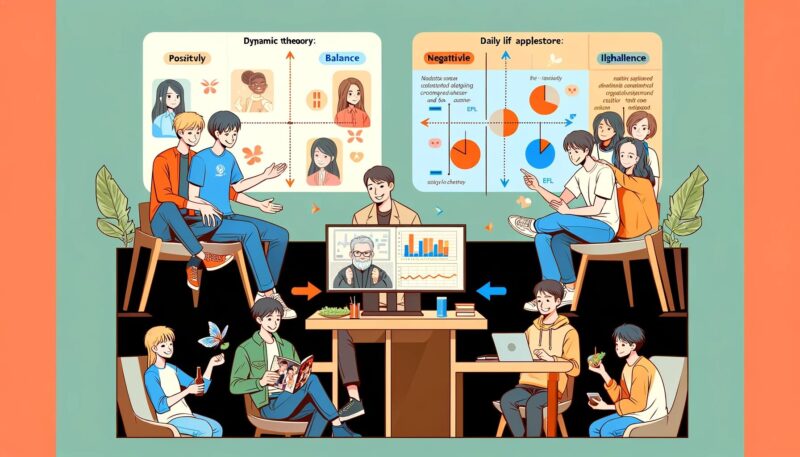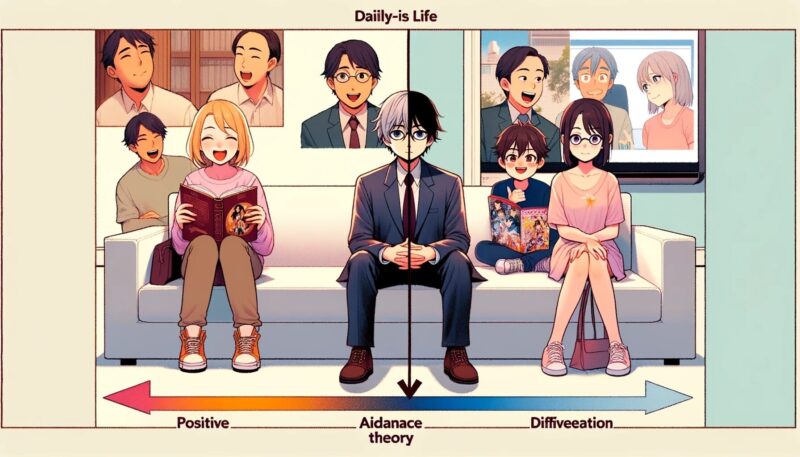Do you have questions or concerns like these?
- What is Balance Theory?
- What is a concrete example of Balance Theory?
If you’re grappling with such questions and uncertainties, this time I will clearly explain:
- Overview
- A concrete example based on my experience
Please refer to this article to deepen your understanding of Balance Theory.
What is Balance Theory?

Balance Theory, proposed by social psychologist Fritz Heider, is a concept that focuses on the maintenance of cognitive balance within individuals.
This theory is particularly concerned with consistency in human relationships and attitudes.
Overview of the Theory
Balance Theory is explained through a triadic relationship known as the P-O-X triad, where P represents a person, O represents another person, and X represents an object.
For the triadic relationship to maintain balance, the following conditions must be met:
- All relationships are positive (P likes O, O likes X, and P likes X).
- Two positive relationships and one negative relationship (e.g., P likes O, O likes X, but P dislikes X).
If these conditions are not met, the balance is disrupted, causing psychological tension in the individual, who will then seek to change attitudes or relationships to restore balance.
Applications of the Theory
Balance Theory can be applied in various situations, such as:
Interpersonal Relationships
For example, if friend A likes friend B but dislikes friend C, the way friend B feels about friend C can influence A’s attitudes and relationships.
Marketing
If a consumer likes a particular brand (X), they are more likely to view a celebrity (O) endorsing that brand positively.
Limitations of the Theory
There are several limitations to Balance Theory.
For instance, real-life relationships and attitudes are often more complex than simple triadic relationships and involve multiple factors.
Additionally, other psychological theories and elements also influence an individual’s maintenance of cognitive balance.
What is a concrete example of Balance Theory?

Application in Daily Life
In my daily life, I frequently experience and apply Balance Theory in various situations, especially in my friendships, academic pursuits, and anime viewing hobby.
This theory plays a crucial role in maintaining harmony and understanding in these areas.
Friendships
For instance, in my relationships with friends A and B, the importance of balance is evident.
When friends A and B get along well, I feel positive about their relationship.
However, if friend A has a conflict with a new acquaintance, friend C, it affects my feelings towards A and my relationship with C.
From the perspective of Balance Theory, I reassess my relationship with C and consider how to handle the situation.
Academic Balance
In my graduate studies, Balance Theory is also useful.
For example, as I progress in my marketing research, I have a strong preference for a particular theory (X).
If my advisor (O) also supports this theory, a strong balance is created between us.
However, if my advisor is critical of the theory, I feel tension and consider exploring other theories or adjusting my research direction to align with my advisor’s views.
Anime Viewing Hobby
The same applies to my hobby of watching anime.
For example, if there is an anime (X) that I love and my friend (O) also enjoys, we can strengthen our relationship by discussing it.
However, if my friend dislikes the anime, I either try to convey its appeal or find other common interests to maintain balance.
This article uses material from the Wikipedia article “Balance theory” which is released under the Creative Commons Attribution-Share-Alike License 4.0. Additionally, the texts and images were generated using ChatGPT.


